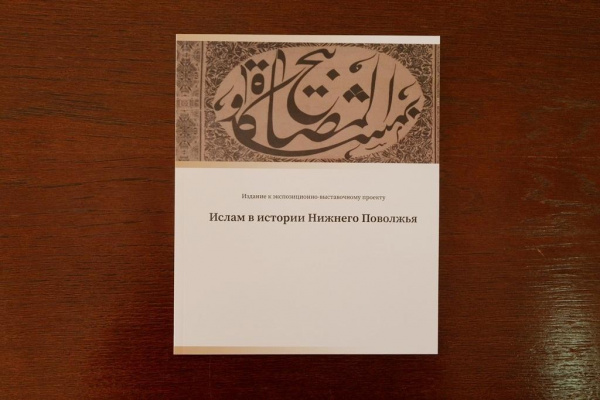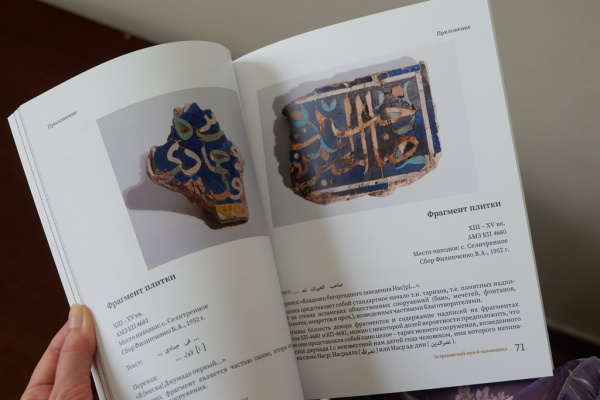‘Islam in the History of the Lower Volga Region’ exhibition, dedicated to the 1100th anniversary of the adoption of Islam by Volga Bulgaria and the Year of Folk Art and Intangible Cultural Heritage of Peoples in Russia, is held at the Astrakhan Museum-Reserve.
From 30 September to 30 October, Astrakhan residents and visitors to the city will be able to see with exhibits telling the history of regional Islam. The project is supported by the History of the Fatherland Foundation.
The authors of the project will present a virtual version of the exhibition on the museum’s website. Therefore, anyone interested can ‘visit’ it via the Internet after 30 October.
Over 40 exhibits are divided into the collections: ‘Archaeology’, ‘Decorative and Applied Arts’, ‘Metal. Wood’, and ‘Rare Books’. They include decorations, wall panels, crockery of the XIII-XIV centuries, as well as books used by Astrakhan Muslims and photographs of mosques and people.

On October 7, the museum hosted the XIV All-Russian Scientific and Practical Conference ‘Astrakhan Local History Readings’, where a publication dedicated to the exhibition project ‘Islam in the History of the Lower Volga Region’ was presented. The event was attended by the author of the book, historian-orientalist, Doctor of Historical Sciences, Professor at the Russian Academy of Sciences, Ilya Zaitzev. It should be noted that the scholar has for the first time introduced into scientific circulation unique editions of the XVI-early XX centuries in Arabic, Persian, Turkic languages from the collection of ‘Rare Books’ of the museum.

Islam in the region appeared in the VIII-X centuries. It existed during the Golden Horde period and remained as the main religious tradition of the local population, mainly Tatars, after the annexation of the Astrakhan Khanate to Russia in 1556. The number of Muslims in Astrakhan Province was more than 30% of the total population.
The Astrakhan Tatars were Sunni Muslims. But there were mosques built by Shiites in the city. The culture of the Ottoman Turks had a great influence on the development of Islam.
After the Mongol invasion, the city of Astrakhan became the centre of transit trade along the Lower Volga Region, which formed the central lands of the Golden Horde state. The Astrakhan Khanate, which became independent in 1502 when Crimean Khan Mengli Giray attacked ‘Throne Province’ and destroyed the Golden Horde, prospered thanks to the fish trade. Until the Astrakhan Khanate was fully captured by the Russians in 1556, it was dominated by the Nogai and Crimean Khans, who wanted to extend their dominance into the Lower Volga Region. This situation destabilized the Khanate and prevented it from consolidating its position. The Astrakhan Khans, fearing their powerful Tatar neighbors, formed an alliance with the Grand Dukes of Moscow. However, the new aim of the Russian Dukes, who seized the Khanate of Kazan in 1552, was to capture the Khanate of Astrakhan and gain access to the Caspian Sea. As a result, with the capture of Astrakhan by the Russians in 1556, Turkish-Ottoman domination of the region came to an end.
Thanks to such rich history of the region, the exhibition ‘Islam in the History of the Lower Volga Region’ reveals traces of a variety of once-dominant cultures due to the ethnic diversity of the region and historical events.
GSV "Russia - Islamic World"
Photo: astmuseum.ru
